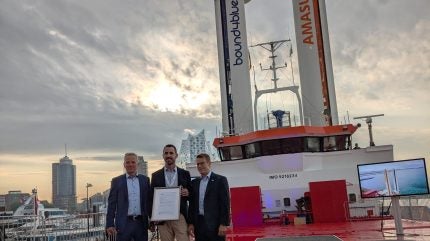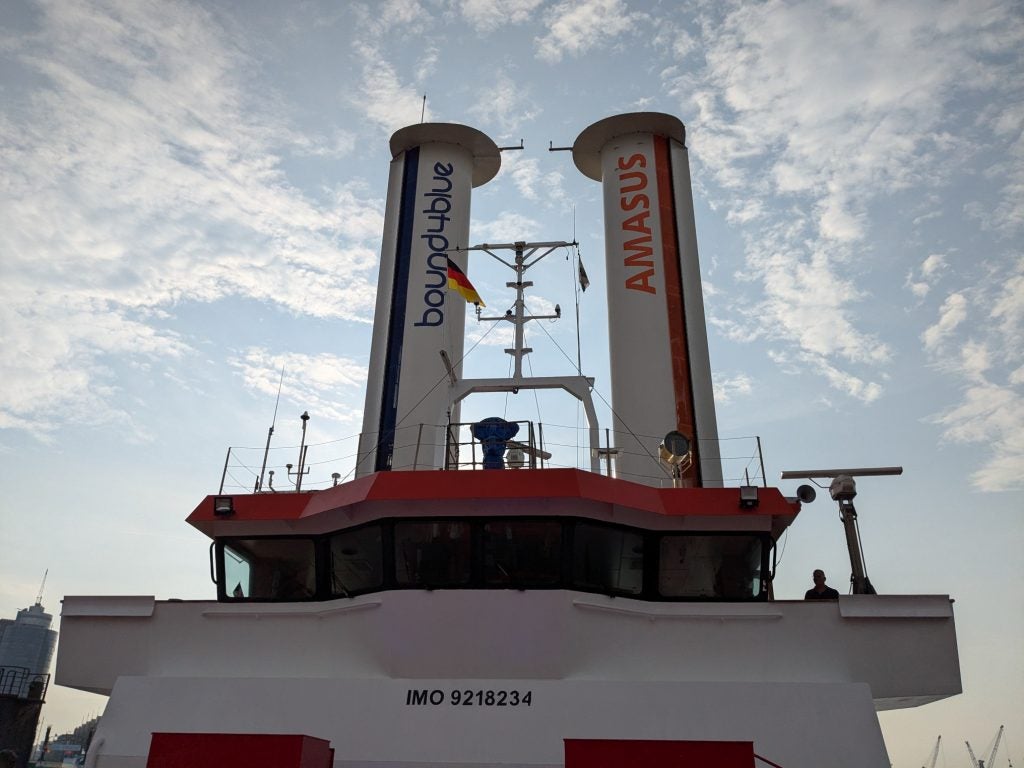
Wind-assisted propulsion technology developer bound4blue was awarded Type Certification by DNV at a ceremony onboard the Eems Traveller bulker vessel, during the SMM conference in Hamburg.
The Amasus Shipping-owned and operated vessel was the first “commercial installation” of the “eSail” product, according to co-founder of the Spanish firm, David Ferrer.
“It has been a great milestone for the company… the first commercial installation, from which we have learned a lot.
“This [vessel] has been basically the baseline for all the other installations that we’re doing right now,” Ferrer told the trade media onboard.
The Type Certification falls under DNV Standard ST-0511 Wind-assisted Propulsion Systems and means the eSail rotor products can be installed on any DNV-classified ship.
Rasmus Stute of DNV said the moment was another landmark for the shipping sector as major players aim to move towards decarbonisation.
How well do you really know your competitors?
Access the most comprehensive Company Profiles on the market, powered by GlobalData. Save hours of research. Gain competitive edge.

Thank you!
Your download email will arrive shortly
Not ready to buy yet? Download a free sample
We are confident about the unique quality of our Company Profiles. However, we want you to make the most beneficial decision for your business, so we offer a free sample that you can download by submitting the below form
By GlobalData“Maritime energy transition is on everybody’s agenda, every shipping company has to reduce CO2 emissions going forward, and with the help of the system propulsion, such as your system, the industry will make significant steps towards that goal,” he said.
While wind-assisted propulsion might not seem revolutionary, compared to hydrogen power cell technology or electrification, it is a vital “building block” according to Stute.
“Energy efficiency is actually one of the most important building blocks and the first step to take in order to tackle carbon dioxide.”

“Wind-assisted” is key, as the current market conditions mean commercial ships are unlikely to take up wind propulsion as the only power train onboard, but the products are designed to take the load off the diesel engines and boost efficiency.
“The fully autonomous system works by dragging air across an aerodynamic surface, generating exceptional propulsive efficiency. The simple, low weight and easy to install units significantly cut main engine loads, fuel use and emissions,” Bound4Blue explained.
Ferrer said the approval should help the company attract new clients – not that it has done badly so far.
“Wind has massive potential for the maritime industry, both as a renewable energy source, but also as a tool to enable other alternative fuels. However, some owners and operators, understandably, may not know where to turn in this emerging segment.
“This approval consolidates our position as a preferred partner, with a proven system, and we aim to leverage it to cement our standing at the vanguard of the coming wind revolution,” Ferrer added.
In February Bound4Blue installed the sails on Louis Dreyfuss Armateurs’ vessel, used by Airbus to transport its parts across the Atlantic. This is not the only rotor sail technology employed by the aircraft giant: its new fleet, also built by Louis Dreyfus Armateurs, will feature Norsepower wind-assist hardware.
Bound4Blue’s current order book is focused on tanker vessels, including an East Pacific Shipping medium-range oil tanker in Singapore and a juice tanker again for Swiss charterer Louis Dreyfus.
“And there are some others, we are drafting the contracts, but I can’t tell you more,” Ferrer revealed to Ship Technology.



